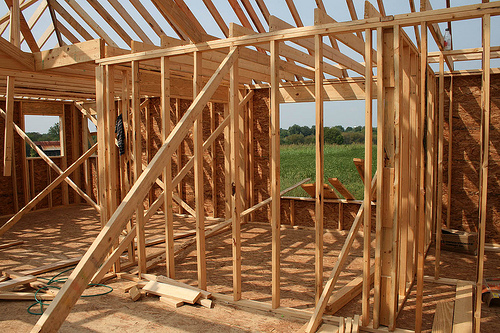
Self building is becoming increasingly popular recently, for a multitude of reasons. At the same time, people are becoming much more environmentally conscious, and with a big project like a self build, people want to make sure the home you are going to live in for many years to come is built as sustainably as possible. Furthermore, building regulations are becoming ever more stringent and this means it is hard to avoid the ultra efficient building technologies that are now available.
 What are sustainable building materials?
What are sustainable building materials?
Some building materials are more sustainable than others – let me give you a few examples. Cement is one of the big causes of carbon emissions across the planet. The production process is extremely carbon intensive and it is virtually impossible to get hold of truly environmentally sustainable cement products. Timber on the other hand can be extremely environmentally friendly, as long as the wood is sustainably sourced. Because it is a form of biomass, as long as the trees are replanted once harvested and managed sustainably, there should be very little net carbon emissions as a result.
Insulation is a very important part of a new build. You will need to meet some really stringent standards these days, so why not consider an environmentally responsible product like sheepwool? You can use it both as part of your roof and wall insulation, and the u-values you can achieve are comparable to environmentally questionable rigid board insulation or fibreglass, which requires huge amounts of carbon intensive energy to produce.
Heating your self build
The way you heat your self build is going to be crucial when you consider its carbon footprint. There are a mass of different options, including going down the ultimate passivhaus route which requires very little heating if any. For those that can’t afford that option, here are some great ways to heat a self build if you incorporate them into the design stage:
- Combine solar and electric heating – If you are designing the property from scratch, you can incorporate a lot more solar capacity than a standard house. That means the larger solar input and greater insulating properties could be used to run an efficient electric heating system, like a heat pump or infrared. In a normal house, the energy you create in the winter is unlikely to provide much help with heating, but in a really well insulated property, you need a lot less heat, and you could use an efficient electric heating system to warm your house.
- Solar Thermal for your hot water – Solar thermal is a great way to heat your hot water, and you can benefit from the RHI payments. It works by heating the water in your cylinder and on some days it will get the water hot enough to boil! It only needs a few square meters of space on the roof too.
- Biomass – If you have the space, biomass is a great way to heat your home. It is a bit pricey to install, but the RHI payback is very generous, and most systems will payback in the 7 years, if not sooner as a result. They do need a bit more upkeep than a standard boiler however, so think carefully before you go ahead on this one. It is very low carbon, as long as you use an approved source of fuel.
Passivhaus
Passivhaus is a German design idea that is becoming very popular in Europe. Properties are built to strict design codes, and the end result is an ultra insulated, air tight property with a clever ventilation system to keep the air quality high. It is so well designed that you normally don’t have to heat the home at all, just have a small heating system for the coldest weather. We have written more about Passivhaus here.
Sustainability does not equal efficiency
The important thing to note is that whilst a passivhaus or a well insulated home will produce far lower carbon emissions than a standard house, they don’t necessarily mean that the house is sustainably built.
As we have touched on, fibre glass is much more energy intensive to produce than sheep wool, but has similar thermal properties. Products like Celotex equally are quite energy intensive products. The passivhaus scheme and indeed the government’s building regulations don’t take this into account – it is purely the end result that is considered, so you should bear this in mind if you are going for a truly sustainable design.
Sustainable doesn’t have to be expensive
We recognise that building your own home is a really considerable undertaking, costing hundreds of thousands before you reach your finished pad. It is easy to take the cheaper route just to meet those building regulations, rather than looking at the bigger picture, but you can consider some of the sustainability implications without necessarily spending a lot more money. Make sure you do so early on in the planning stage though – it makes all the difference.












No Comments yet! Be the first one.